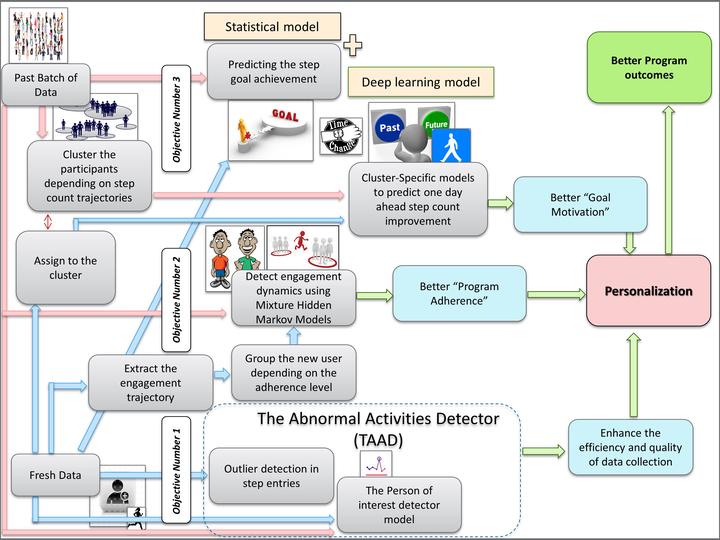Machine Learning

This project collects all the materials I have worked during my PhD in Applied statistics. There is gap in the literature in regard to the statistical methods utilised for analysing step count data collected in physical activity programs. Therefore, this thesis has applied and validated several statistical and machine learning models in the context of the personalisation of physical activity programs such as VPGC and discussed methods that may be used to overcome the many challenges of these programs, while maintaining their quality and effectiveness. This chapter discusses the contributions to future research on online health programs such as the VPGC and the new academic knowledge that has been developed.
In my thesis I have addressed a centralised theme: to improve the engagement of participants in the VPGC program by promoting personalisation and visualisation for decision-making. The VPGC is a 100-day physical activity program that has been developed to improve the physical activity and psychological wellbeing of employees. The main objective of the program is to enhance employee engagement in work-related matters through healthy behavioural change. Employees sign up to the program in teams of seven, encouraging healthy competition and creating support networks and accountability, with the purpose of leading to behaviour change. Employees enrolled in the program are encouraged through various static approaches to engage in at least 10,000 steps per day. VPGC targets the four main pillars of healthy living, physical activity, sleep, a balanced mindset and nutrition. Of these four modules, physical activity is the main module of the program, running from the beginning to the end of the program. The other three modules begin on later days of the program. Ideally, program participants log in to the mobile application on a daily basis to sync or manually enter their physical activity data (e.g. step count). Indeed, most physical activity and wellbeing programs include a physical activity module in which participants sync their daily step count. Therefore, in the thesis, only the physical activity module has been considered to achieve the expected outcomes.